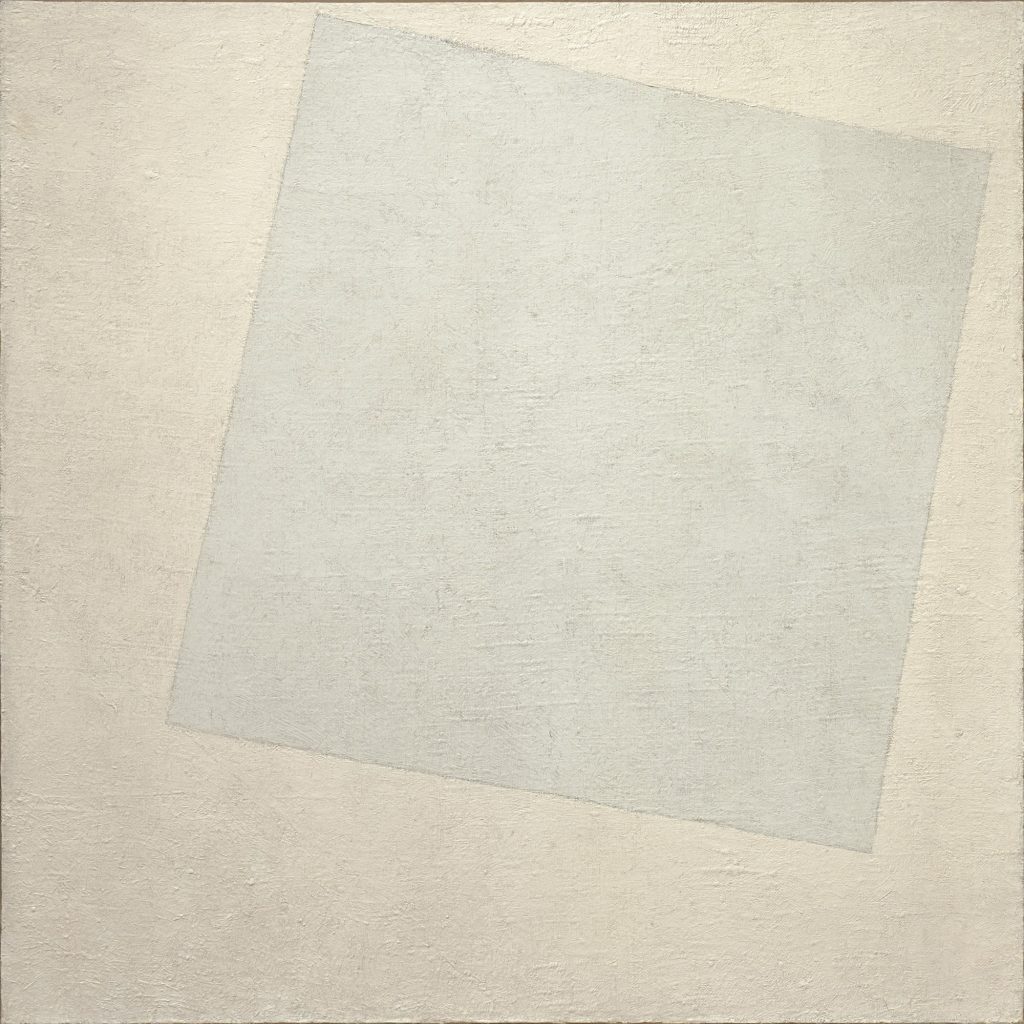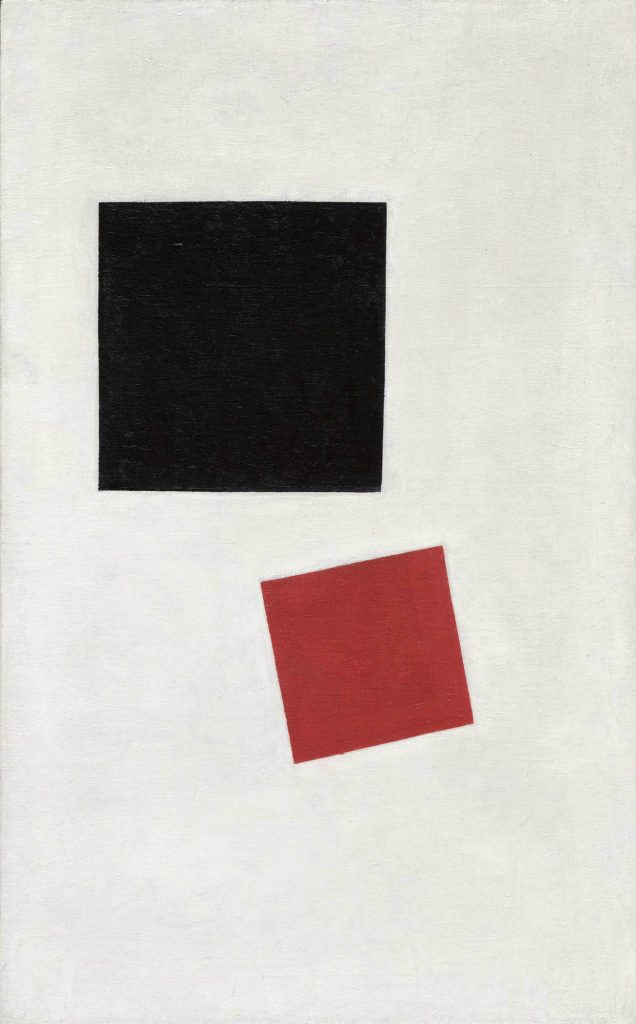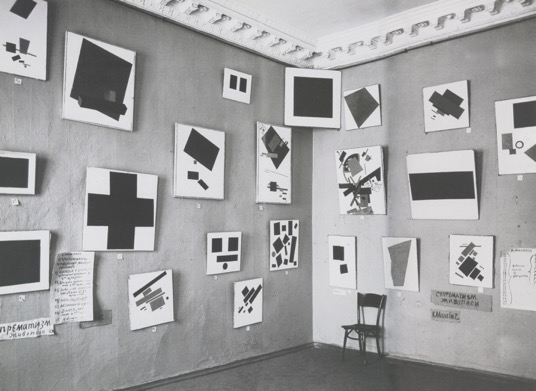The saying “a 5-year-old can do that!” is often said about most abstract art pieces. Russian artist Kazimir Malevich’s The Black Square is no exception – it’s quite literally a black square on a canvas. Well, not quite.
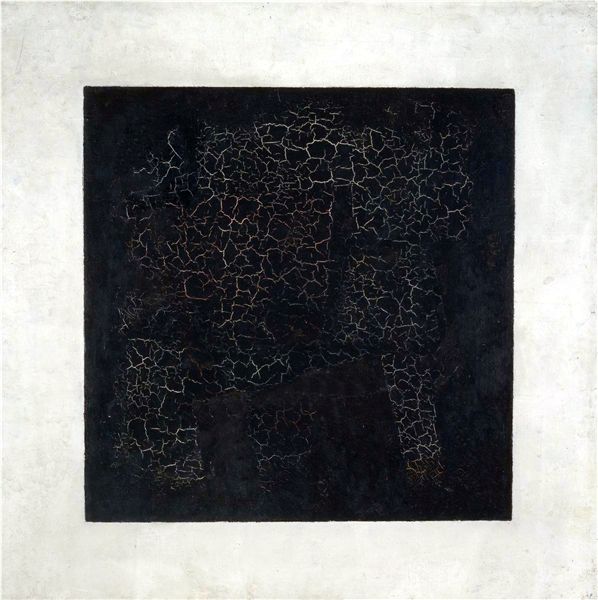
How many squares are too many squares?
Malevich created four different black squares, each one still being exhibited in art museums in Russia. The most popular, though, is the first one. If someone were to look closely at it, tiny cracks filled with various colors show through. In an x-ray scan of the artwork, it was revealed to have two different paintings underneath the black paint, as well as writings. This was how the curators knew the painting was first exhibited upside down. Malevich went to create other ‘versions’ of The Square painting, including the White on White, The Red Square, Black Square and Red Square, and many more.
It is also said that the origins of The Black Square could have originated from a play, as Malevich oversaw the set design. The play was orchestrated by Mikhail Matyushin and Aleksei Kruchenykh based on a manifesto about rejecting rational thought.
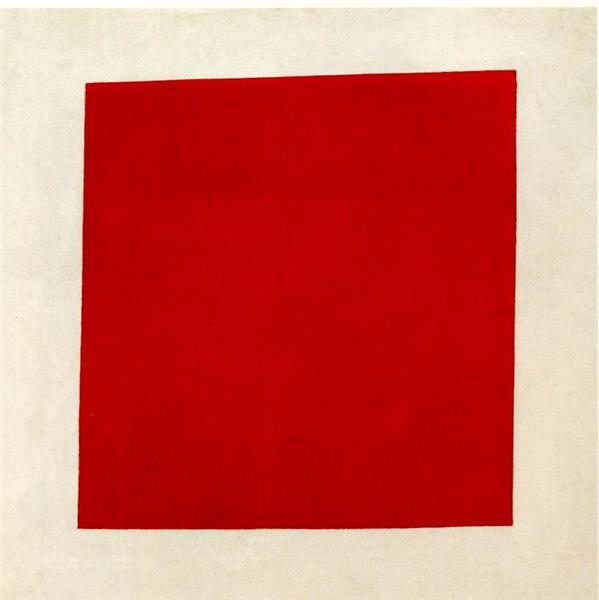
Is Suprematism the new abstract art?
Around 1915 upon completing these paintings, he eventually invented the phrase and movement ‘Suprematism.’ Although it wasn’t long-lived, Malevich aimed to assess how we can view art through shape and forms, rather than a representation or depiction of reality.
Suprematism also paved the path for future designers and artists. The Black Square, in particular, had an impact not only on how people viewed art but also how trademarks are now a part of an artist’s identity. In Malevich’s case, his Black Square painting was what people associated him with. He’d often sign his works with a black square when he went back to figurative paintings, and his funeral car had a black square in the front.
Simple but effective
Many critics and audiences commend Malevich’s simple Suprematist paintings. The subject, oftentimes a shape, was literal and easy to interpret, which audiences can view in various ways. For instance, one could argue his Black Square painting means nothing, yet another could view it as a revolutionary work due to how Malevich approached art from a new perspective. Both interpretations wouldn’t be wrong either due to how abstractly made Supremacist paintings are.
Like previously mentioned, Supremacism did not last long. However, the impact it had greatly affected contemporary artists and designers. Today, the idea that a painting or design had to represent a somewhat depiction of reality seems to be too restricting. Furthermore, Malevich’s recognition from the Black Square paved the way for artists to simply represent their artistic brand with simple shape and color, similar to a logo.
Sources
https://www.youtube.com/watch?v=tmAx6umELmU&ab_channel=RUSSIABEYOND
https://www.tate.org.uk/art/artists/kazimir-malevich-1561/five-ways-look-malevichs-black-square
